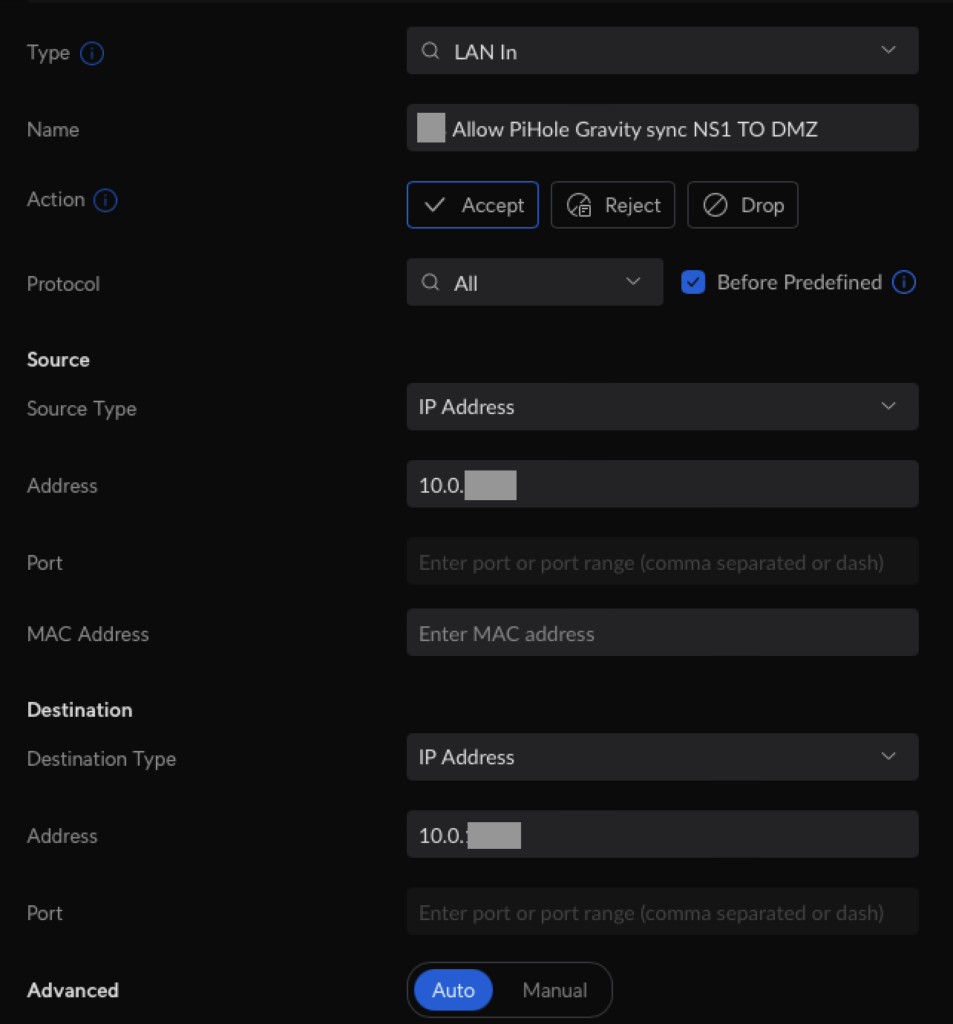If you run more than one Pi-hole server in your network, it can be handy to synchronise both instances so that you do not need to add and maintain your local DNS entries and your ad-block lists on two different machines.
Currently you have two possibilities do achieve this: Orbital-sync and Gravity-sync. Orbital-sync uses the admin interfaces to synchronise. Gravity-sync connects both instances via SSH.
To set up gravity-Sync, you have to do the following:
- As a precaution, backup both instances of Pi-hole using the backup function (under Settings, Teleporter tab) and, if you use a virtualisation environment, take snapshots of both instances.
- If the two Pi-hole servers are running in different VLAN’s, do not forget to set up the corresponding firewall rules (for both directions).

- On both Pi-hole instances: Install Gravity-sync using this command (source):
curl -sSL https://raw.githubusercontent.com/vmstan/gs-install/main/gs-install.sh | bashA wizard will ask you for the connection information (IP, user, password) for the remote host. The configuration will be saved in /etc/gravity-sync/gravity-sync.conf.
- On both Pi-hole instances: Run a comparison of the local and remote Pi-hole databases using:
gravity-sync compare- On your master Pi-hole instance, push the configuration from your master to the slave instance. Be careful not to push a default or incomplete configuration of a new instance to your running instance.
gravity-sync push- On both Pi-hole instance: To automate synchronisation run the following command:
gravity-sync auto- Additionally: to adjust the frequency of updating, run one of the following commands:
gravity-sync auto hour
gravity-sync auto half
gravity-sync auto quad